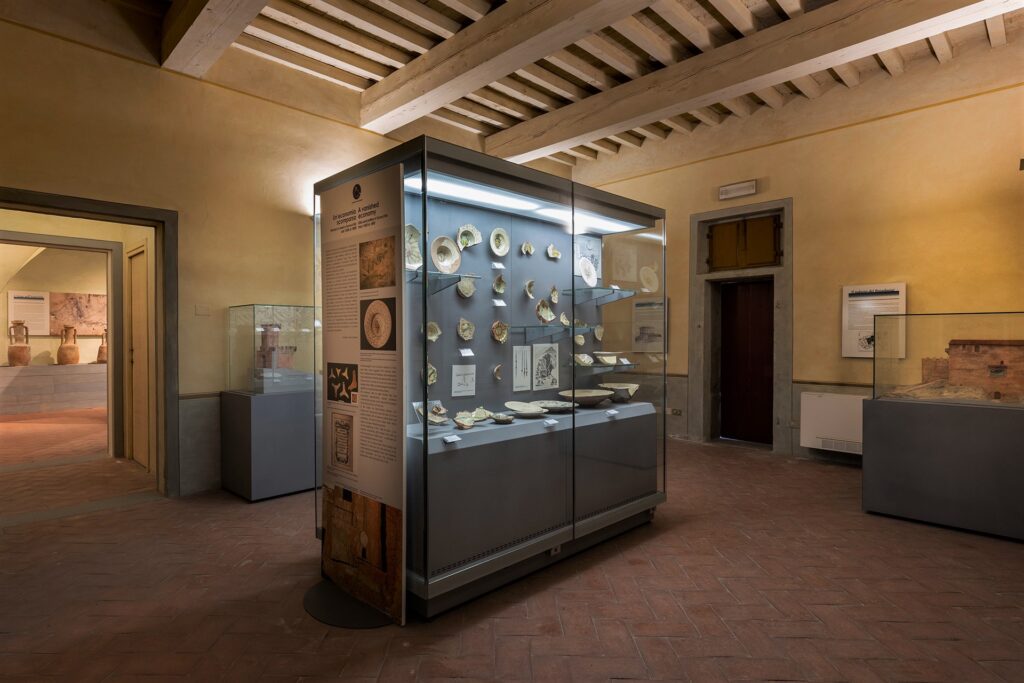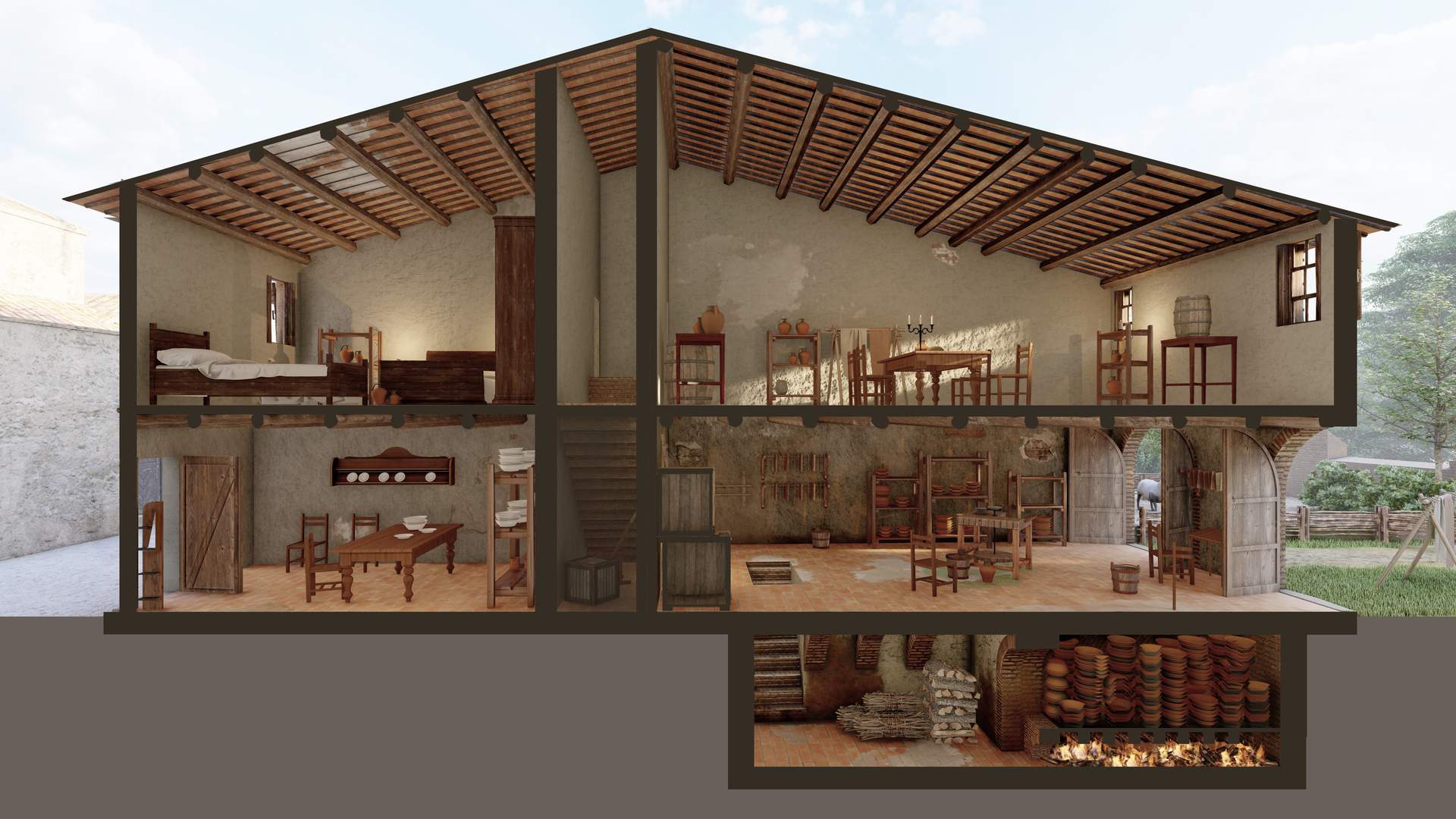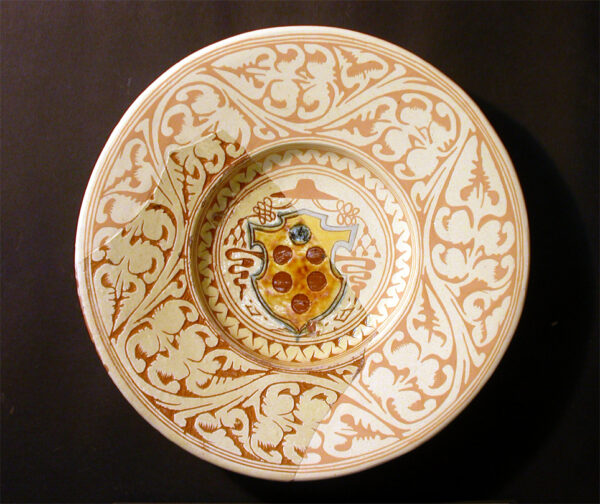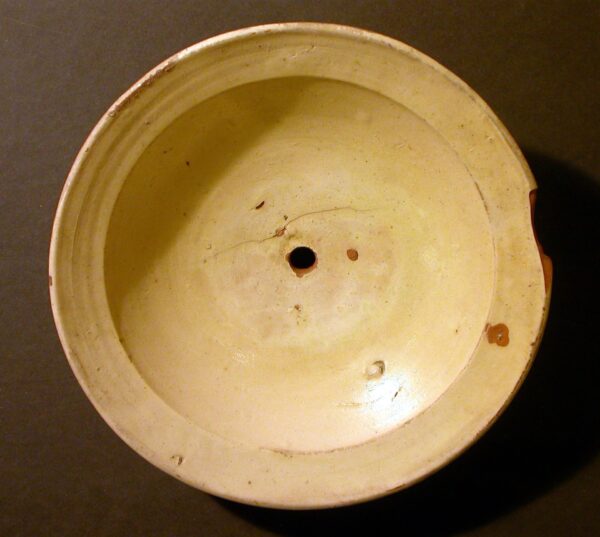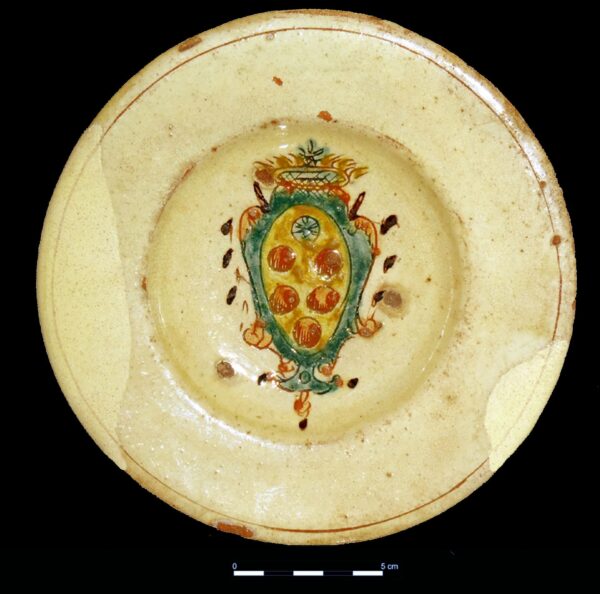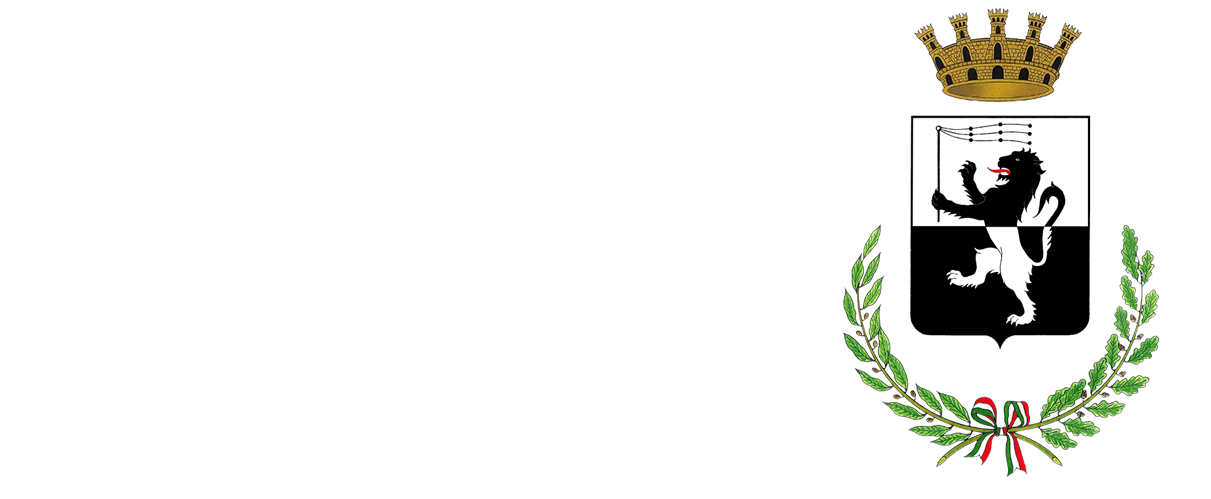- The Museum
- The Rooms
- Archaeology (1-6)
- Art (7-15)
- Room 7. Paintings, frescoes and Minor Guilds from the 13th to the 15th centuries
- Room 8. The great 16th-century paintings
- Room 9. 17th-century paintings
- Room 10. The jewellery room
- Room 11. 17th- and 18th-centuries paintings and jewellery
- Rooms 12-13. The sacred vestments
- Room 14. The relics of Giuseppe Montanelli (Fucecchio, 1813-1862)
- Room 15. The Arturo Checchi collection (Fucecchio 1886 – Perugia 1971)
- Nature (16-17)
- Collections
- Temporary exhibitions
- Events
- Multimedia
- Surroundings
- Versione italiana
Room 5. Pottery workshops from the 16th to the 19th centuries
Identified forty years ago, after almost two centuries of oblivion, the production of ceramics was introduced in Fucecchio by potters originally coming from Valdinievole and Valdelsa who relocated here in the first half of the 1500s. The number of kilns, which produced exclusively engobed ceramic and graphite, grew rapidly until the 1700s, when there were twenty-four. However, already in the first half of the 1800s only two had survived, their fate representative of that of the Tuscan economy during the age of Leopold, when a production structure still substantially of late medieval foundation, found itself confronted with the first industrial experiences. Historical and archaeological data fully describe the trajectory of this manufacture, which for almost three centuries was one of the most important assets of the Fucecchio economy, but also the type of products and their market range which, in 1700s extended from Lucca to Florence and the Maremma.

